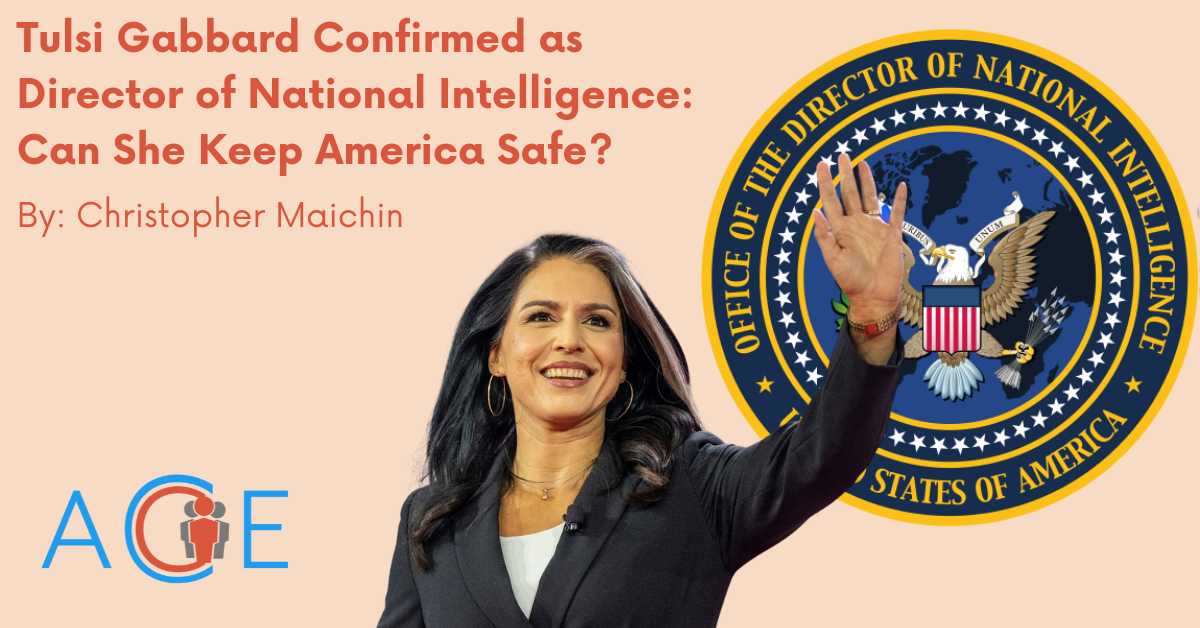In another significant development in Washington, Tulsi Gabbard—once a Democratic congresswoman, later an outspoken critic of her party, and now a key ally of President Donald Trump—has been confirmed as the Director of National Intelligence (DNI).
Gabbard’s political journey has been anything but conventional. Born in American Samoa and raised in Hawaii, she became the youngest person elected to the Hawaii state legislature at 21. After serving in the Hawaii National Guard and deploying to Iraq, she was elected to the U.S. House of Representatives in 2012, becoming the first American Samoan and Hindu member of Congress.
Her tenure in Congress was marked by independent positions on foreign policy, including a 2017 meeting with Syrian President Bashar al-Assad, which drew bipartisan criticism. In 2022, she announced her departure from the Democratic Party, claiming it was under the control of an “elitist cabal of warmongers.”
A Contentious Confirmation Process
During her confirmation hearings, Gabbard faced intense scrutiny over her past statements and actions. Senators questioned her previous defense of Edward Snowden, whom she had once called a “brave whistleblower.” When pressed to label Snowden a traitor, she responded: “Edward Snowden broke the law.”
Snowden, a former NSA contractor, leaked classified information in 2013 about the U.S. government’s mass surveillance programs, including the bulk collection of American phone records under the Patriot Act. His revelations exposed the extent of the NSA’s global surveillance operations and sparked a worldwide debate on privacy, national security, and government overreach. While some view Snowden as a whistleblower who revealed unconstitutional surveillance, others, including U.S. officials, see him as a criminal who endangered national security.
Gabbard had previously argued that Snowden deserved a fair trial rather than immediate prosecution under the Espionage Act, which does not allow whistleblowers to defend their actions in court. However, her confirmation hearing remarks signaled a shift, suggesting she would take a harder stance on intelligence leaks now that she leads the nation’s intelligence apparatus.
Reversal on Surveillance Policies
During her confirmation hearings, Tulsi Gabbard faced intense scrutiny over her past statements and actions. Senators questioned her previous defense of Edward Snowden, whom she had once praised for exposing illegal government activities. When pressed to label Snowden a traitor, she acknowledged that he broke the law but refrained from using the term “traitor.”
Regarding government surveillance, Gabbard had been a vocal critic of Section 702 of the Foreign Intelligence Surveillance Act (FISA), expressing concerns that citizens’ communications could be incidentally collected when targeting foreign nationals.
However, during the hearings, she indicated a shift in her stance, suggesting that with appropriate reforms, Section 702 could be a valuable tool for national security. This change led some Democrats to accuse her of political opportunism, while Republicans viewed it as a necessary evolution given her prospective role.
Despite strong Democratic opposition, Gabbard’s nomination was confirmed by the Senate with a vote largely along party lines.
As Director of National Intelligence, Gabbard now oversees all 18 U.S. intelligence agencies, including the CIA, NSA, and FBI. Her appointment raises pressing questions about the future of U.S. intelligence policy. Will she uphold her past calls for transparency and civil liberties protections, or will she adopt a more traditional intelligence posture now that she’s at the helm?
With rising global threats, cybersecurity challenges, and intense domestic political divisions, Tulsi Gabbard faces an uphill battle. The question is no longer whether she could get here. It’s whether she can succeed.

